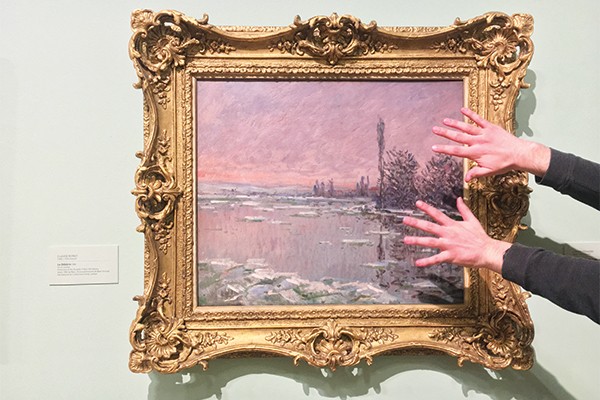Envision cruising in through the Octagon and walking straight up to ‘La Débâcle’ by Claude Monet (if you know where to find it that is, thanks Dunedin Public Art Gallery), then shoving your hands onto the oil painting’s exterior; your Fatty-Lane-grease-infused digits sprawled across Monet’s impressionistic paragon.
The thought of such a sin would provoke art enthusiasts and admirers alike to shed tears. But consider not being able to see the work, so beautiful that it could evoke such an emotional reaction, let alone not being able to see the colours of the world to begin with.
I recently stumbled upon a remarkable advance in the way art is experienced by the visually impaired. A company named 3DPhotoWorks, running out of New York, renders famous works into textured 3-D models for the blind and visually impaired to literally feel.
Founded by former photographer John Olsen, the company has rendered the likes of the Mona Lisa and the Portrait of Dr Gachet, transforming the experience of art for the blind in a way that we could hardly have imagined 20 years ago. On his website, blind.tech, Olsen states that “To blind people, the ability to see art on their own represents independence, equality and freedom”. He further expressed that “3D tactile printing allows them to establish their own opinions about a painting or a photo. They no longer need to rely on the author’s words, accept a docent’s point of view or take an educator’s equation for granted.”
The video reactions Olsen has posted on his site are Facebook-video-where-the-dog-dies tear worthy, a celebration of the collaboration between technology and human altruism. Reactions were supremely positive at his first exhibit within the National Federation of the Blind’s annual convention, with reactions ranging from squeals of delight to the slightly ironic outburst from one woman who “couldn’t believe her eyes!” Olsen operates on a no-barriers mindset; what those with full eyesight experience should be available to those without.
Although we won’t be smearing Double Down residue onto Monet’s icebergs anytime soon, even in the name of charity, if you have a friend or peer who is visually impaired within the university consider guiding them through the campus to touch the various sculptures sprinkled throughout, asking for their interpretation of the works, and talk through what you ‘see’.
Be sure to check out artsaccess.org.nz for updates on accessible art exhibitions within the Otago area and beyond.
Art does not discriminate. We do not see with our eyes, but with our brains.
Photo credit: Timothy Varsányi



